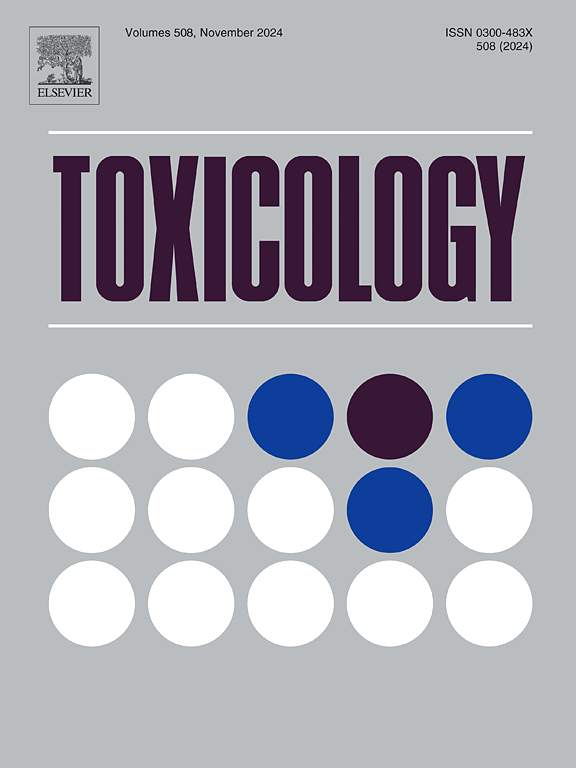与吸入可燃烟草制品中存在的潜在有毒元素有关的毒性评估:雪茄、烟斗烟草、比迪烟和香烟——风险评估问题的评估。
IF 4.8
3区 医学
Q1 PHARMACOLOGY & PHARMACY
引用次数: 0
摘要
吸烟相关疾病是一项重大的全球卫生挑战,特别是考虑到将烟雾直接吸入脆弱的呼吸系统。与食物或空气污染等其他形式的环境污染相比,这种消费方式在根据接触毒素对吸烟进行分类方面提出了挑战。因此,可燃烟草制品(cps),包括雪茄、烟斗烟草、比迪烟和香烟,属于毒性最大的材料,对健康有广泛的不利影响。大多数关于ctp中有毒元素的研究都集中在香烟上,而其他形式的烟草受到的关注相对较少。此外,目前还没有确定的方法来估计消费者因吸入烟雾而暴露于这些元素。本研究的目的是利用食品化学模型,在考虑空气污染暴露水平和吸烟的独特特征的情况下,估计消费者在各种ctp中暴露于潜在有毒元素(pte)的情况。研究结果表明,吸入不到0.5克烟草产生的烟雾就会产生有害剂量的元素,如Ni(无癌症风险)或as(致癌风险)。这表明,吸入香烟烟雾中的有毒元素大大增加了与烟草有关的健康风险。环境影响声明。本文章由计算机程序翻译,如有差异,请以英文原文为准。
Assessment of toxicity associated with inhalation of potentially toxic elements present in combustible tobacco products: cigars, pipe tobacco, bidis and cigarettes – An evaluation of risk assessment issues
Smoking-related diseases represent a substantial global health challenge, particularly given the direct inhalation of smoke into the vulnerable respiratory system. This method of consumption presents a challenge in classifying smoking in terms of exposure to toxins, in comparison to other forms of environmental contamination, such as food or air pollution. Combustible tobacco products (CTPs), including cigars, pipe tobaccos, bidis, and cigarettes, are therefore among the most toxic materials with a wide range of adverse health effects. The majority of studies on toxic elements in CTPs concentrate on cigarettes, with other forms of tobacco receiving comparatively little attention. Furthermore, there is currently no established methodology for estimating consumer exposure to these elements regarding smoke inhalation. The aim of this study was to estimate the exposure of consumers to potentially toxic elements (PTEs) in various CTPs, utilising a model adapted from food chemistry but considering air pollution exposure levels and the distinctive characteristics of smoking. The findings indicate that the inhalation of smoke from less than 0.5 g of tobacco can deliver hazardous doses of elements, such as Ni (noncancer risk) or As (carcinogenic risk). This suggests that inhalation of toxic elements in cigarette smoke significantly contributes to tobacco-related health risks.
Statement of Environmental Implication
- 1.The analyzed tobacco and the determined potentially toxic elements themselves are contaminating materials and compounds as they have hazardous effects on the environment and humans.
- 2.The results of the study represent environmentally relevant conditions, as the analysis was made on real tobacco product samples and the calculations were appropriately modelled to estimate actual human exposure conditions.
求助全文
通过发布文献求助,成功后即可免费获取论文全文。
去求助
来源期刊

Toxicology
医学-毒理学
CiteScore
7.80
自引率
4.40%
发文量
222
审稿时长
23 days
期刊介绍:
Toxicology is an international, peer-reviewed journal that publishes only the highest quality original scientific research and critical reviews describing hypothesis-based investigations into mechanisms of toxicity associated with exposures to xenobiotic chemicals, particularly as it relates to human health. In this respect "mechanisms" is defined on both the macro (e.g. physiological, biological, kinetic, species, sex, etc.) and molecular (genomic, transcriptomic, metabolic, etc.) scale. Emphasis is placed on findings that identify novel hazards and that can be extrapolated to exposures and mechanisms that are relevant to estimating human risk. Toxicology also publishes brief communications, personal commentaries and opinion articles, as well as concise expert reviews on contemporary topics. All research and review articles published in Toxicology are subject to rigorous peer review. Authors are asked to contact the Editor-in-Chief prior to submitting review articles or commentaries for consideration for publication in Toxicology.
 求助内容:
求助内容: 应助结果提醒方式:
应助结果提醒方式:


